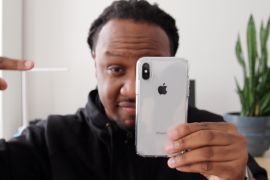Today our mobile devices and online accounts host everything from family photos, to private conversations, to information about our finances, and everything else in between.
Sadly, that data can often be targeted by cyber hackers. We’ve all heard those unfortunate stories of individuals or companies who’ve had their online accounts compromised, their data stolen, and then publicly exposed or used in other malicious ways. The good news is that there are steps that we can take to help protect ourselves against this.
Here are 4 tips to protect your online accounts, personal devices, and other precious data stored online:
1. Use Strong Passwords for Your Online Accounts
Create passwords that are at least 8-10 character long, and contain a combination of uppercase letters, lowercase letters, numbers, and special characters. Avoid using common words, names, places, and numbers that can be easily guessed or associated with you (i.e. birth dates, street names, nicknames, etc.).
It’s also a good idea to avoid using the same password for multiple accounts.
In the event that a cyber hacker gains access to the password for one of your online accounts, it’s a logical next step for them to check if that password also works for additional online accounts that may be associated with you. If you have the same password for all of your online accounts, this means that they too can be compromised if a hacker obtains just one of your passwords. Use different across your online accounts whenever possible.
2. Use Two-Step Authentication Whenever Possible
Two-step authentication is a quick and easy way to add an extra layer of security to your online accounts. When in place, it requires the account owner to enter a special passphrase or pin code in addition to their username and password. The passphrase or pin code is randomly generated, and is sent to the account owner through email or text each time they attempt to access their account. Entry to the account is denied if the passphrase or pin code is not entered. Two-step authentication has become increasingly available in recent years, and is available on most social networks and email services, to name a few. Check your account settings to see if it’s available.
3. Password Protect Your Mobile Devices and Computers
Although it’s a touchy subject in some circles, there aren’t many good reasons not to have some layer of password or password protection on a phone, tablet, or computer today.
These devices can contain also sorts of personal information our contacts, credit card information, conversations, photos, and other bits of our personal information.
In the event that your phone is lost or stolen, all of those things could be accessed if your phone isn’t password/passcode protected. Setup a passcode, password, or other available security measure (i.e. fingerprint scan, touch id, etc.) on your phone to prevent unauthorized use.
4. Stay Mindful of the Data That You Store in the Cloud
Although we can go to great lengths to help ensure the security of our personal devices, we don’t have that level of control over the online services that we rely on to preserve our data. For this reason it can be a wise choice to remove your sensitive data from remote/online storage locations (e.g. iCloud, email, Dropbox) and transfer it to storage locations under your direct control (e.g. secure, non-network hard drives at your home, etc).





